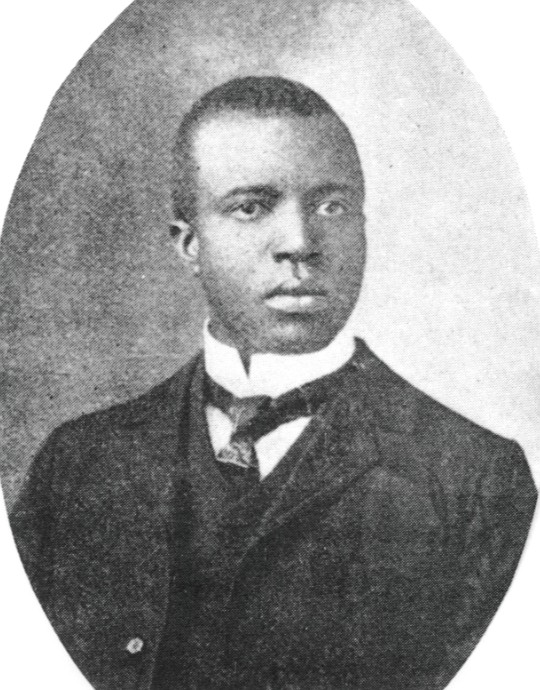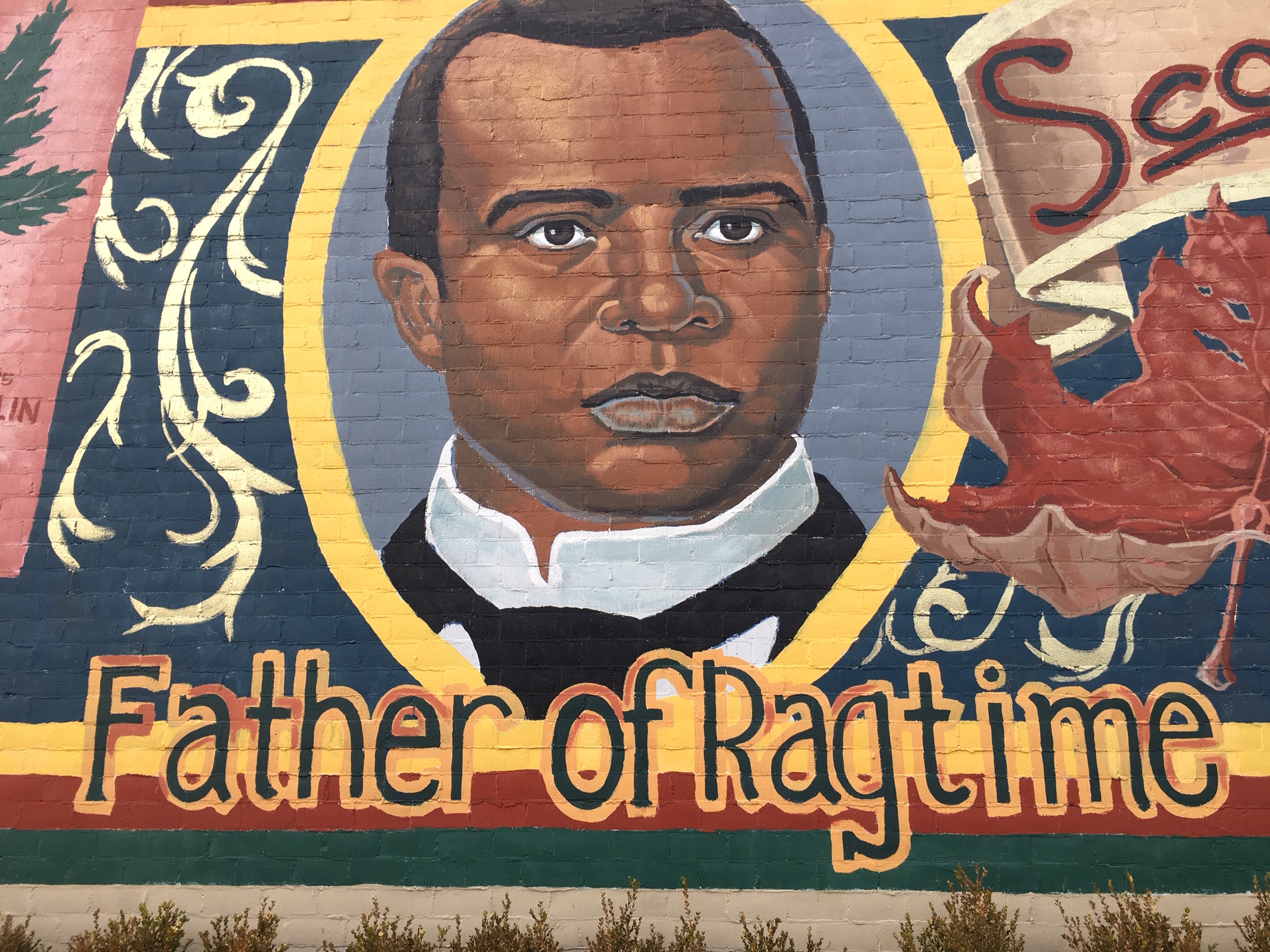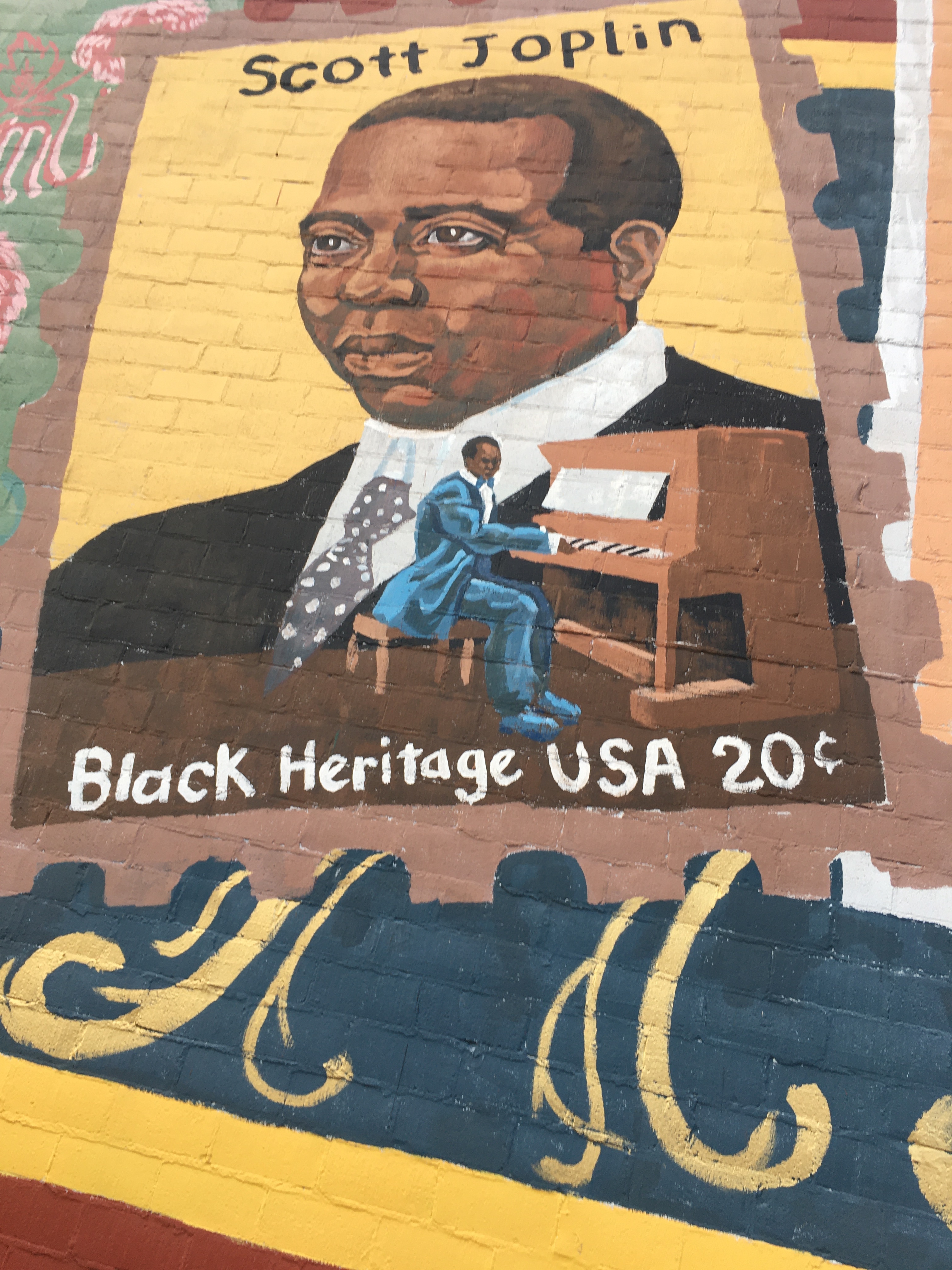(EDITOR'S NOTE: This is the first in a series of stories that will run each Sunday in February to commemorate Black History Month.)
Scott Joplin's visage overlooks the historic Perot Theatre from a mural in downtown Texarkana touting his composition "Treemonisha," for which he received a posthumous Pulitzer Prize in 1976, and other representations of his extraordinary life.
At 901 State Line Ave., there is a historical marker planted by the Texas Historical Commission in 1976 that begins: Black composer Scott Joplin, often called the "King of Ragtime Music," was born in Texarkana, Texas, five years before the townsite was platted in 1873. His family lived in this vicinity, and he attended nearby Orr School on Laurel Street.
Three years before this recognition, Joplin's ragtime music was adopted by Marvin Hamlisch for the hit movie "The String" starring Robert Redford and Paul Newman as a pair of con artists in 1930s Chicago. The picture won several Oscars, including Best Picture and Best Original Song Score.
Joplin has been in the spotlight for a long time, and if anything his renown has only grown.
Without doubt, he is one of Texarkana's most famous gift's to the world.
Texarkana, of course, was not the only stop on the sharecroppers' son's trek to worldwide recognition.
While there is some debate about exactly where Joplin was born, or where his family lived the first years of his life; It is established that when he was about age 7, he and his family moved to Texarkana.
His early musical training came from his father, Giles Joplin, an ex-slave who played the fiddle, and mother, Florence Givens Joplin, who played the banjo, according to the THC.
His father was an emancipated slave who worked on the railroad, his mother cleaned houses.
Already proficient on the banjo, Joplin took an interest in piano, and an insightful neighbor, W.G. Cook, for whom Florence Joplin worked as a domestic, made the instrument available to the budding pianist. By age 11, Joplin was receiving formal piano lessons from Julius Weiss, who introduced the neophyte to sight reading, composition and opera.
Joplin's history becomes cloudy around the year 1884, for it marks a time when Joplin either left Texarkana or became an assistant teacher at Texarkana's Negro School. At any rate, by 1888, Joplin entered a period of performing his ragtime piano sound in clubs, brothels and saloons in the Midwest.
Joplin would occasionally return to Texarkana to visit his mother and five siblings. He would not visit his father who had been unfaithful and left with another woman, according to some accounts.
In 1893, Joplin performed at the World's Fair in Chicago, an event that drew more that 25 million people from every state in a celebration of all that was new and exciting.
Joplin and his first band gave crowds a preview of ragtime and his original arrangements and he was quickly discovered by the media, which at that time meant newspapers. He was on his way.
The next year, Sedalia, Missouri would become Joplin's home base and he began formally studying music at George R. Smith College for Negroes. He performed solo and with a small dance band in the area black nightspots and penned his first published songs.
From Sedalia he toured with his eight-member Texas Medley Quartette into New York state and points east.
In 1896, during an extended stay in Temple, Texas, Joplin published three more pieces.
In 1897, Joplin's "Original Rags," was published.
In the 1890s, Joplin was one of the originators of ragtime, a rhythmic new musical form that combined black and white musical traditions, according to the THC, and Joplin's "Maple Leaf Rag," published in 1899, launched ragtime as a national fad. It sold 75,000 copies in 6 months, an astonishing feat at the time.
With some money rolling in, Joplin moved to St. Louis with his first wife Belle. But their marriage did not survive the death of their baby girl. It didn't help that his wife wasn't all that interested in his music.
Still, his years in St. Louis proved to be productive. His compositions included, "The Ragtime Dance," "March Majestic," and "The Entertainer," which would reestablish his greatness when it was scored in "The Sting," a blockbuster in the early 1970s.
In the summer of 1904, Joplin married again. She was taken ill less than 3 months later and died.
That was all Joplin could take of St. Louis. He toured with an opera he had written called "A Guest of Honor," but almost immediately ran into trouble. Stolen box-office receipts left him no way to pay the performers, touring company or hotel, and the innkeeper confiscated the musical score and all his belongings for payment.
Joplin's musical understanding and comprehension eventually led him to create music that integrated his ragtime rhythms and idioms with other, larger forms of music such as opera and ballet. He gravitated to New York City and spent the last decade of his life there fighting the effects syphilis and trying to stage his masterpiece, the opera "Treemonisha."
By 1916 Joplin's health had begun to fail, causing such deterioration that the musician was placed in the Manhattan State Hospital in New York City where he died on April 1, 1917. He was 49 years old when he died a pauper in a mental ward.
Not long before his passing, he rightly predicted that he would be forgotten.
Joplin's works, including a ballet, two operas, a manual and many works for piano.
To the end, Joplin defended ragtime against those who called it frivolous and worked constantly to refine his music, which included over 30 piano rags. Demand for ragtime had declined by 1917, when Joplin died in New York City.
Joplin's background is revealed in his most ambitious work, the black folk opera "Treemonisha," set on a plantation "northeast of the town of Texarkana." It was not produced until the 1970s, when a revival of Joplin's music inspired public recognition of his genius.
Joplin and his work are treasured worldwide, but particularly in Sedalia, Missouri, and Texarkana.
Texarkana honors Scott Joplin in many ways, including the downtown mural, which was redone several years, and annual celebrations, COVID permitting.
In 2017, Texarkana put together a major tribute to him, a three-day series of events on the 100-year anniversary of his death. Organizers expect follow-up events to continue annually.
Without doubt, Scott Joplin is one of Texarkana's favorite sons, and arguably, if not unquestionably, its most musically gifted.
(EDITOR'S NOTE: This story was pieced together from a variety of sources -- some contradicting each other and sometimes foggy on facts and attribution -- including earlier Texarkana Gazette reports and several second-hand accounts. This story does not, in any way, purport to be definitive or based on scholastic research. It is intended only to celebrate the life of a Texarkana native son, who dreamed the impossible dream and then made it so.)




